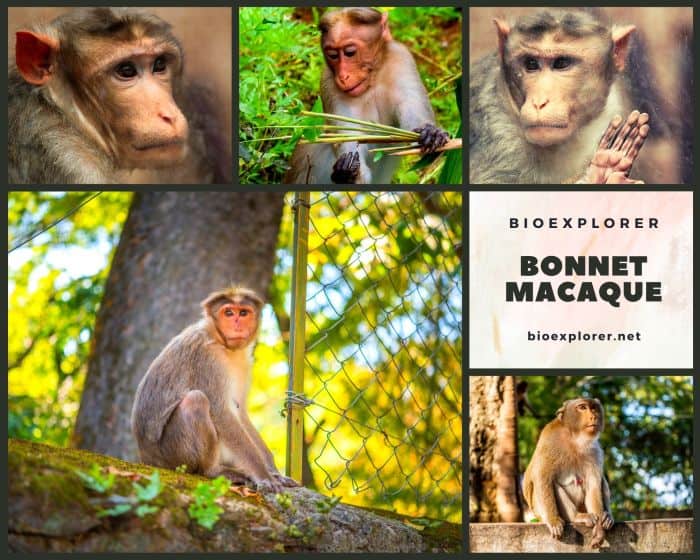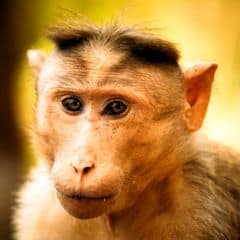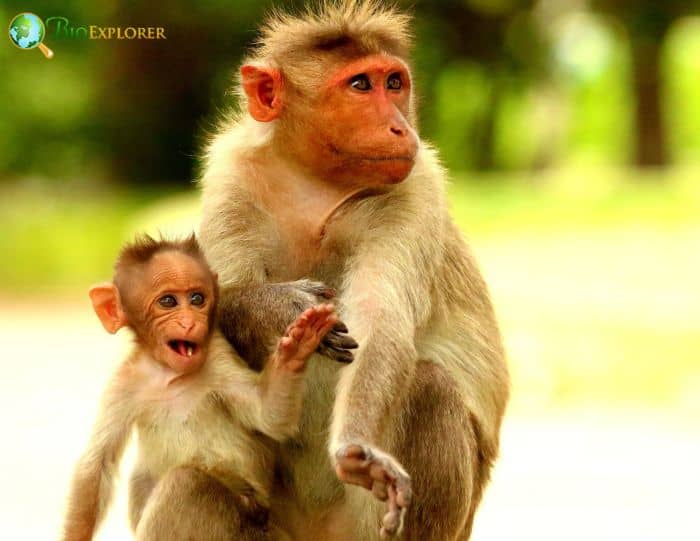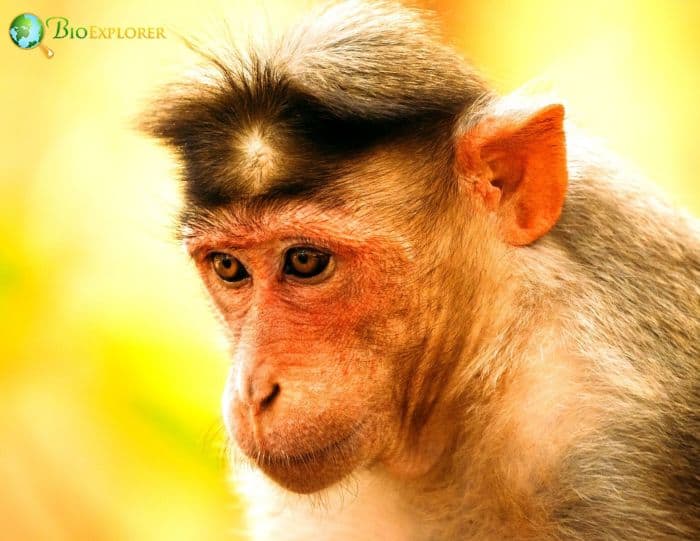
| Animalia | Primates | Cercopithecidae | Macaca | Macaca radiata |


- Common Name: Bonnet Macaque
- Taxonomy Classification Year: 1812
- Monkey Size: 35 to 60 cm (13.78 to 24 in)
- Skin Color(s): Gray or golden-brown
- Habitat: Forest
- Diet: Omnivorous
- Native Countries: India
Bonnet Macaque Distribution
Bonnet Macaque Characteristics

The Bonnet Macaque[1], also called Zati, is a species of macaque native to southern India.
- Bonnet macaques get their common name from a unique feature: a hood-like tuft of hair that extends from the top of their head, much like a tuft of dry grass.
- Framed by large ears, a bonnet macaque’s wrinkled, hairless face commands attention. The face is pink in females.
- Their marble-round eyes look out into the world with a very expressive forehead.
- As is common in many Old-World monkeys, the species has cheek pouches for storing food and narrow, downward-pointing nostrils.
- They skillfully navigate through their world with color-seeing eyes and nimble, sensitive hands.
What Do Bonnet Macaques Eat?

This southern Indian monkey’s diet includes many insects, leaves and fruits. Here are some of them listed in the research published in the Journal of Bombay Natural History Society[¶]:
- Neem (Azadirachta indica)
- Tamarind (Tamarindus indica)
- Indian Ash tree (Lannea coromandelica).
- Rattan (Calamus rotang)
- Duhat (Syzygium cumini)
- Spanish Cherry (Mimusops elengi).
- Spinous Flueggea (Flueggea leucopyrus).
- Fig (Ficus)
- Algarrobo (Prosopis chilensis)
- Corn (Zea mays)
- Jackfruit (Artocarpus heterophyllus)
- Stickpea (Calliandra haematocephala)
Bonnet Macaque Facts
- There are two identified subspecies of bonnet macaques. The two subspecies differ in the color of their bellies: Macaca radiata radiata have dark bellies, while Macaca radiata diluta have light bellies.
- Its range is bounded by the Indian Ocean on three sides and the Tapti and Godavari Rivers.
- While their sense of smell seems less developed due to their narrow nostrils, bonnet macaques may rely on their sense of taste to confirm when the fruit is ripe and ready to eat.
- Scientists have observed their juveniles using the tails for support when climbing, although the tail is non-prehensile.
- They live in multi-female and multi-male groups of around 30 individuals, organized in linear order by age.
Suggested Reading: Monkey Names List
Cite This Page
APA7MLA8Chicago
BioExplorer.net. (2025, January 15). Bonnet Macaque. Bio Explorer. https://www.bioexplorer.net/animals/mammals/monkeys/bonnet-macaque/.
BioExplorer.net. "Bonnet Macaque" Bio Explorer, 15 January 2025, https://www.bioexplorer.net/animals/mammals/monkeys/bonnet-macaque/.
BioExplorer.net. "Bonnet Macaque" Bio Explorer, January 15 2025. https://www.bioexplorer.net/animals/mammals/monkeys/bonnet-macaque/.
















